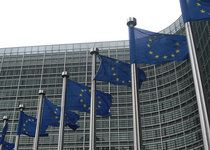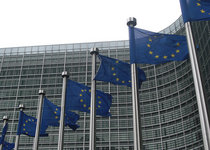Carbon trade lobby looks to EC for rule clarification
An emissions trading lobby group has called for the EC to clarify the rules relating to UN-backed carbon offsets.

 A lobby group concerned with emissions trading has called for the European Commission to clarify its rules relating to the use of UN-backed carbon offsets in the third phase of its emissions trading scheme with the aim of creating a boost in market confidence.
A lobby group concerned with emissions trading has called for the European Commission to clarify its rules relating to the use of UN-backed carbon offsets in the third phase of its emissions trading scheme with the aim of creating a boost in market confidence.
The lobby group sent a letter to EU Climate Commissioner Connie Hedegaard yesterday urging the commission to establish rules relating to the number and types of offsets that participants in the scheme could utilise between 2013 and 2020 should a deeper 2020 emissions cut target be adopted. International Emissions Trading Association President and CEO Henry Derwent said, "A vital principle of private financing appears to have been lost: the need to guarantee regulatory certainty and business continuity for investors."
In May this year, the EC presented an analysis of the costs, benefits and options for moving beyond the EU's emissions reduction target for 2020 from 20 per cent below 1990 levels to 30 per cent. This change in estimation has been facilitated by lower green investment costs following both the economic crisis and a drop in carbon prices.
However, companies are worried this change would cause confusion as to the finer details of the trading scheme. Companies are asked to submit permits for their emissions but they can also use cheaper offsets for part of the requirement. These are generated through investment in low-carbon clean energy as part of the Clean Development Mechanism (CDM). Such projects earn Certified Emission Reduction (CER) credits – each one the equivalent to one tonne of CO2.
The EU has reportedly been considering the restriction of certain types of CDM offsets as of 2013 as well as refusing to accept those from developing nations that short-change in their carbon-cutting efforts.
The IETA has warned that ongoing uncertainty regarding specific guidelines set by the EU will only lead to further reductions in private sector investment in the CDM. Derwent argued that CDM is currently the only existing mechanism which incentivises private sector low-carbon investment in developing countries. He added,
"The EU has been key to the development of the CDM. Yet largely as a result of decisions taken or expected by the EU, market confidence in the CDM is at very low ebb."
Ms Hedegaard has since been keen to highlight that change would only occur under the right economic conditions, "Whether to increase our reduction target for 2020 from 20% to 30% is a political decision for the EU leaders to take when the timing and the conditions are right."
Due to a range of factors including the global economic crisis, the absolute cost of meeting the 20 per cent target has decreased from €70 billion to €48 billion per year by 2020. The cost of reaching the 30 per cent target is now estimated at €81 billion per year by 2020 - €11 billion higher than the estimated cost for a 20 per cent reduction two years ago.
However, while higher energy prices have spurred energy efficiency and reduced energy demand, this reduction in absolute costs comes in the context of a crisis which has left businesses unable to invest in innovative green technology. The EU is expected to come to a decision regarding the change in autumn this year.
Author: Tom Watts | Climate Action
Images: tiseb | Flickr






